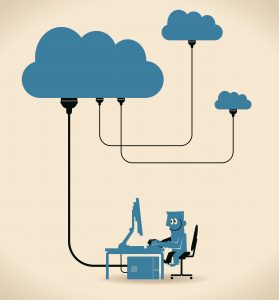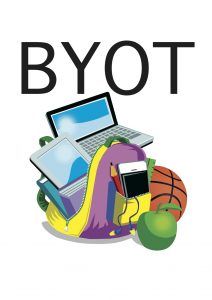Mal Lee and Roger Broadie
In moving schooling from a paper to digital construct the way is opened to shift to an increasingly sophisticated, powerful, flexible and naturally evolving operational base, and allow schools to continually provide an apt, ever richer, contemporary 24/7/365 education.
Critically the shift in thinking enables schools and systems to better accommodate the world of accelerating, seemingly chaotic, often uncertain digital and societal evolution they are operating within, and importantly to evolve and grow in harmony with the rest of society.
Theoretically, as indicated in the last post (Lee and Broadie, 2019), the possibilities for teaching and learning opened by a digital construct are virtually unlimited, with possibilities being added daily as the thinking develops and the technology evolves.
While that might hold in many fields of endeavour, schools as formal government controlled institutions with defined obligations, having to contend with societal expectations will always be more constrained than most other organisations.
That said the success of the schools that have gone digital, and adopted a socially networked mode have demonstrated schools can move some distance along the digital evolutionary continuum, and with apt leadership and support can evolve ad infinitum.
The facility to do so will differ markedly with the type of school, likely the size and type of education authority, and the government of the day. Independent, and largely autonomous schools will invariably have greater scope to move, as will smaller government systems.
While individual schools can make a significant shift ultimately the government of the day must play a lead role if the schools/system is to move from Industrial Age staff selection criteria, working conditions and remuneration or to remove the blockages imposed by the likes of statutory examinations boards, basic skills tests and inspectorates.
Tellingly, mostly unnoticed, many nations now have in their distance education schools/system ground breaking digital constructs, that have long abandoned their correspondence schools, which astutely couple the evolving technologies, social networking and face to face teaching, and provide an important insight into what is possible. Significantly many of those schools already have working conditions and remuneration arrangements markedly different to the mainstream schools.
The key variable in any construct shift will be human, with the decision makers opting to move to a digital construct or choosing to reject or minimise the opportunities opened and stay with the lower order variant.
Thus far, near all the world’s education authorities and schools have chosen, consciously or not, to stay with the latter, to fend off digital disruption and natural evolution, and to largely deny the opportunities opened by a digital construct.
While most schools and systems have chosen to retain, and laud the paper construct, outside their walls the world continues to evolve at an accelerating rate, daily distancing the young’s in from the out of school use of and learning with the digital (Friedman, 2016). The digitally connected young outside the school naturally, and unconsciously employing a digital mindset, embracing networked learning, taking charge of their 24/7/365 learning with the technology, and daily growing their version of being digital (Lee, Twining and Broadie, 2018).
The paper construct, with its focus on learning within the physical site and virtual disregard for any learning outside the school has likely inclined most to disregard the reality that formal schooling occupies less than 20% of the young’s annual learning time. They seem conveniently to forget today’s schools are operating within a rapidly evolving, chaotic, increasingly connected world where most global change happens naturally, unplanned, with myriads of consequences and unintended benefits and disbenefits. Disruption, seeming chaos will invariably result in order, and a new normal.
Among the many challenges in shifting to a digital construct is to obviate the inefficiencies of natural evolution (Pascale, Millemann and Gioja, 2000). There is need to marry the natural with planned change, to continually take advantage of the pertinent global megatrends in creating and shaping the desired learning environment and culture.
The early adopter schools have demonstrated how that can be done.
But ultimately governments must lead the way for school construct change to happen and be sustained widely.
While visionary, often maverick heads and governments have orchestrated pronounced construct change, history reveals all too often that change is ‘rectified’ and the dents removed with the change of head, or government. Invariably the dents are removed by the application of stultifying carry overs of the paper construct. The great dampener, is the use of principal selection criteria that favour those wanting to maintain the status quo, and which accords no importance to the new head being able to grow the construct shift underway.
Governments must be responsible for the human construct it employs within its schools. If it opts to stay with the traditional then it should bear the political, educational and economic consequences. If it chooses to shift it needs to ensure the total construct, the total digitally based ecosystem is attuned to realising the shaping educational vision.
The Opportunities
Even at this still relatively early phase of the Digital Revolution the opportunities opened for schools moving to a digital operational construct are immense, and largely limited by the human imagination.
Many of the possibilities the authors have examined in earlier writings, all of which can be read on the Digital Evolution of Schooling website.
There are a few that merit special mention.
The move provides the opportunity to:
- Return to first principles and clarify the desired shaping educational vision. It bids all associated with the school to question, and to continually question the aptness of all paper construct practises in a digital context.
- Have all associated with the school/s, but particularly the leadership approach contemporary schooling, and the wider education of the young, with a digital, and networked mindset – not as now with an analogue.
- Ensure the educational vision, the clear sense of purpose guides the creation and daily shaping of a school ecosystem and culture that facilitates the desired learning and resourcing.
- Identify those facets of schooling to be retained within the digital construct – which are likely to be many.
- Evolve the school/s, largely in step with society’s ever rising expectations – rather than as now daily falling further behind.
- Have schools play a more integral and productive part within a networked society and economy, moving them out of their current insular situation, making them more efficient, effective, economic and productive, contributing more fully to the growth of not only the young but also the local and national economy.
- Transform paper constructs into digitally mature organisations, built in large upon a tightly integrated, ever evolving, increasingly sophisticated, synergistic digital ecosystem, able to readily interface with and contribute to the networked world.
- Realise John Dewey’s (1916) century old desire of more consciously cultivating both the informal, out of school learning with the formal, in school in the holistic education of each child.
- Better individualise every child’s education, and build upon the young, from around the age of three taking charge of their use of and learning with the digital, learning to learn and naturally growing their being digital.
- Have the schools genuinely collaborate with their digitally connected families in the education of each child, with both parties aware of where they should focus their efforts in growing the child’s holistic education.
- Accommodate both planned, and unintended change, and to optimise the benefits that flow naturally from chaotic evolution.
- Grow a set of operational parameters for a continually evolving digitally based ecosystem and culture, where the young are trusted and empowered – rather than, as now trying to accommodate the young being digital within an aged paper construct where they are distrusted.
- Have the digital underpin all school operations, normalising its ubiquitous use in and outside the classroom, using it to complement the other media, and accrue the efficiencies, economies, synergies and enhancement that can be achieved, intended and unintended.
- Have the schools, as formal institutions recognise that while they can never lead the way in the young’s use of and learning with the digital they can better recognise, build upon and provide direction to the 24/7/365 use and learning.
- Rethink the current Industrial Age structures, processes, working conditions and remuneration and gradually move to those befitting a digital construct.
- Complement the site based with networked teaching, learning and assessment, that can occur 24/7/365, anywhere, anytime. In the upper secondary years, strong arguments can be mounted for much of the learning to happen off site, in jobs, apprenticeships, internships or intensive workshops.
- Employ a more networked mode of school resourcing, where the school and the families pool their resources and expertise, and where schools can draw upon the resources of a networked society, and lessen its near total reliance on government/parent funds.
The educational vision
As we detailed in the last post, the paper construct has led to approaches to schooling, teaching and learning that we continue to accept as ‘normal and correct’ without thinking. Having pursued those ‘normals’ for aeons we understand the type of learning they produce. But we have yet to identify the learning possible within a digital construct.
These now need to become the subject of acute observation and research.
The most obvious of these new affordances are:
- Time learning. If students accept and enjoy the learning challenges that schools lead them into, they can radically extend the time they spend learning. This makes student engagement vital, so that learning is driven more by their internal desire to learn rather than external pressures.
- Just in time access to information. ‘Road-bumps’ in learning, caused by lack of knowledge or understanding can be rapidly overcome, so that they don’t inhibit and damage the flow of learning.
- Individual learners taking charge of their learning 24/7/365, lifelong. The implications of the learner, and not so much the ‘authority’, taking charge of their use of and learning with the digital, from around the age of three through to death are profound.
- Connection to people. Ideas can be discussed online, and forums allow learners to follow the discussions of others. This can bring a multiplicity of people into students’ learning networks and raise the importance of students verbalising and discussing their current understanding.
- The importance of learning to learn, relative to learning a formal curriculum. A key feature of the digital world is the extremely rapid growth of knowledge, which necessitates life-long learning for all. This also implies that state derived curricula and assessments need to focus on competence in a field, and to change as the societal perceptions to be competent evolve.
The Way Forward
The move to a digital operational construct necessitates schools having school principals willing and able to orchestrate the shift, and its continued evolution.
This has been strikingly apparent in the schools that have made the shift(Lee and Winzenried, 2009), (Lee and Broadie, 2018),and indeed in the digital evolution and transformation of all private and public sector organisations.
Without an astute chief executive officer, with digital acumen, able to set the expectations, communicate the vision and daily orchestrate the daily workings and growth of a digitally based school ecosystem there is little chance the shift will occur, let alone be sustained. Great deputy heads, highly committed staff and supportive communities can all assist, but the head must lead.
The head must moreover understand that the construct shift is first and foremost a human challenge, where the school community shapes – on the fly – an organisation it believes can best deliver the desired education.
It is not, contrary to the current approach, a technological challenge, best left to the ‘ICT experts’.
For well over a quarter of a century the universal propensity has been for teachers, ICT coordinators, principals, administrators and particularly governments to focus on the technology, and often only the technology (Lee and Winzenried, 2009), (Lee and Broadie, 2018). Invariably the first step has been to purchase the latest gear, and to laud its purchase. Few appear to understand they have simply been trying to shoehorn a limited use of the digital technology into a paper construct, constrained by Industrial Age structures, processes and mindset.
Not surprisingly the billions spent on digital technology for schools hasn’t magically occasioned construct change, nor will it.
The challenge is for school leaders to identify and gradually shape an organisational structure, a learning environment and culture that takes advantage of the evolving digital technology to provide the desired contemporary education.
The schools and education authorities that have moved to a digital construct have recognised the imperative of putting the educational agenda to the fore and then addressing the many human and technological variables that assist further the agenda.
They have also appreciated they can hasten the shift from the paper to digital construct by tackling those variables largely unconstrained within the existing construct. The shift from an analogue to digital mindset, distributing the control of the teaching and learning, trusting and empowering all, enhancing the family-school collaboration, ensuring all students have the technology, recognising out of school learning with the digital, pooling the home and school resources and expertise, the establishment of an integrated school ecosystem, social networking, and the adoption of a culture of change can all for example be fostered within the existing operational parameters, with few involving an overt clash with the established ways.
History suggests the evolution in schools will be gradual, the schools moving along an increasingly higher order evolutionary continuum, shedding the ways of the paper construct, overcoming the impediments to change, working increasingly within a digital construct.
The authors’ research with the early adopter schools (Lee and Broadie, 2016), points strongly to;
- The schools, while each shaping their own course, in a seemingly chaotic world will move through remarkably similar evolutionary stages as they shift from the paper to increasingly digital construct
- Each displaying, regardless of type or context, common attributes at each stage
- Most schools in their evolution and shift to a higher order of operation needing to move through each of the evolutionary stages
- The evolutionary continuum continually lengthening as the thinking, expectations and technology becomes more sophisticated
- Primary/elementary schools moving faster along the continuum than the secondary.
- The schools lessening their dependence on the physical site for much learning, taking increasing advantage of networked learning and teaching.
Movement along the continuum will rarely be constant, more often it will be the case of two steps forward, and one step back, often with a change of head the school regressing to the world of paper (Lee and Broadie, 2016).
The unplanned commonality evidenced globally in the young’s use of the Net (Tapscott, 1998), and more recently in the children’s use of and learning with the digital (Lee, Twining and Broadie, 2018) is seemingly mirrored globally in schools shift to digital construct.
Conclusion.
While still early days, with appreciably more research to be undertaken the strong suggestion for any school, or education authority seeking to move to a digital construct is to note the key traits evidenced in the evolution of all digitally mature organisations.
- Dewey, J (1916), Democracy and education, New York Macmillan.
- Friedman, T (2016) Thank you for Being LateNew York Farrer, Straus Giroux
- Lee, M and Winzenried, A (2009) The Use of Instructional Technology in Schools, Melbourne ACER Press
- Lee, M and Broadie, R (2016) A Taxonomy of School Evolutionary Stages. 2ndEdition Armidale Douglas and Brown – http://douglasandbrown.com/publications/
- Lee, M and Broadie, R (2018) Digitally Connected Families. And the Digital Education of the World’s Young, 1993 – 2016, Armidale, Australia, Douglas and Brown – http://douglasandbrown.com/publications/–
- Lee, M. Broadie, R and Twining, P (2018) Your Kids Being Digital. A Guide for Digitally Connected Families. Armidale. Australia Douglas and Brown http://douglasandbrown.com/publications/–
- Lee, M and Broadie, R (2019) ‘Moving Schooling from a Paper to Digital Construct’. Linkedin -19 August 2019 – https://www.linkedin.com/pulse/moving-schooling-from-paper-based-digital-construct-mal-lee/
- Pascale, R.T, Millemann, M, Gioja, L (2000) Surfing at the Edge of Chaos NY Three Rivers Press
- Tapscott, D (1998), Growing up digital: The rise of the Net Generation, McGraw Hill, New York






